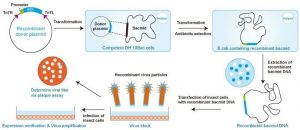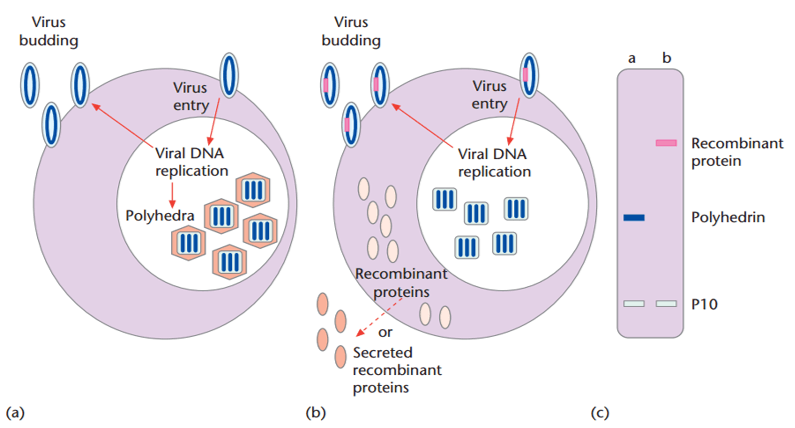Cusabio Baculovirus Recombinant
Abstract
Baculoviruses are lethal insect pathogens, predominantly of the order Lepidoptera. These viruses have a biphasic life cycle, which greatly facilitates their use for biotechnological applications. They were initially exploited as biological control agents and later designed as protein expression vectors. The Baculovirus Expression Vector System (BEVS) is now widely used for the production of recombinant proteins. More recently, they have become a popular choice for development as gene delivery and expression vectors in mammalian cells. This article reviews some of the major developments and patents related to baculoviruses since their initial use as an expression tool and investigates current technologies that alleviate bottlenecks in recombinant gene expression in insect cells.
Insect Cells/Baculovirus Expression System
We constructed recombinant baculoviruses with the expression DNA vectors/bacmids provided by the researchers. Insect cells are co-transfected with wild-type Autographa California nuclear polyhedrosis virus (AcNPV) DNA and isolated recombinant baculovirus and baculovirus transfer plasmids arising by homologous recombination. Recombinant baculoviruses can also be generated by transfection of bacmid DNA using the Bac-to-Bac system.

Recombinant baculovirus stocks from the transfection or co-transfection are plaque purified by an agarose overlay assay. Single recombinant viral isolates are extracted from agarose and used to infect Sf9 insect cells. Infected Sf9 cells (for intracellular proteins) or culture supernatant (for secreted proteins) are provided to the investigator for expression screening and identification of the isolate with the highest level of expression. Detection is normally done by immunoblot assay.
We amplify and titrate recombinant baculovirus stocks. After selection of a specific recombinant viral isolate, a passage #1 seed stock is expanded to a volume of 500 mL and passage #2 viral stock is titrated using an agarose overlay plate assay. to determine the virus concentration in pfu/ml. Small aliquots of the virus from step #2 are placed at -70°C for long-term storage. Most of the amplified 500 ml virus stock is stored at 4°C. In addition to amplifying newly generated recombinant baculovirus seed viral stocks, the resource also amplifies, titers, and stores existing recombinant baculovirus viral stocks provided by researchers.
We expressed proteins of interest (POIs) in insect cells using recombinant baculoviruses. Protein production is done on a small scale in conventional rotary culture vessels in the range of 50-500 volumes or on a large scale in 5-litre oxygenated bioreactors. The resource maintains two insect cell lines for protein production, Sf9 and High Five cells. Sf9 cells are typically used to express intracellular proteins, while High Five is usually preferred for secreted proteins.

The expressed protein is provided to investigators as a washed cell pellet (intracellular proteins) or as a culture supernatant (secreted protein) after pelleting the cells by centrifugation. Insect cells for protein production are generally grown in Grace’s insect medium supplemented with 10% FBS (Sf9) or Express Five (HighFive) chemically defined serum-free media. If requested by an investigator, the Sf9 insect cells will be adapted to a defined medium without serum.
HEK293 cells (transient transfection)
We used the Thermo/Invitrogen Expi293 expression system. Expi293 Expression System is a complete solution for rapid, high-yield protein production from mammalian 293 cells. It is based on integrated components including high-density Expi293F cells in Expi293 Expression Medium and the cationic lipid-based ExpiFectamine 293 transfection reagent in combination with specialized transfection enhancers. The features of the Expi293 expression system:
- Up to 1 g/L of protein; 2- to 10-fold higher protein yields than previous generation transient expression systems, such as the FreeStyle 293 expression system
- Rapid production of recombinant proteins in 5 to 7 days
- High-density cultures of Expi293F cells resulting in higher expression of cells per millilitre of culture
- Native folding and mammalian post-translational modifications of expressed proteins
- Culture protocols

